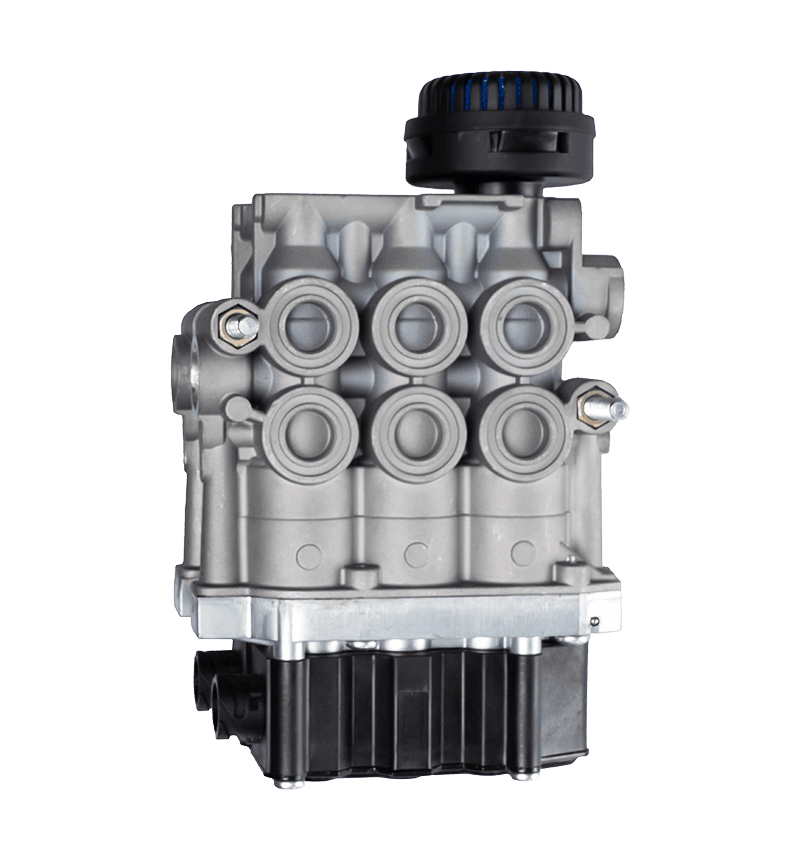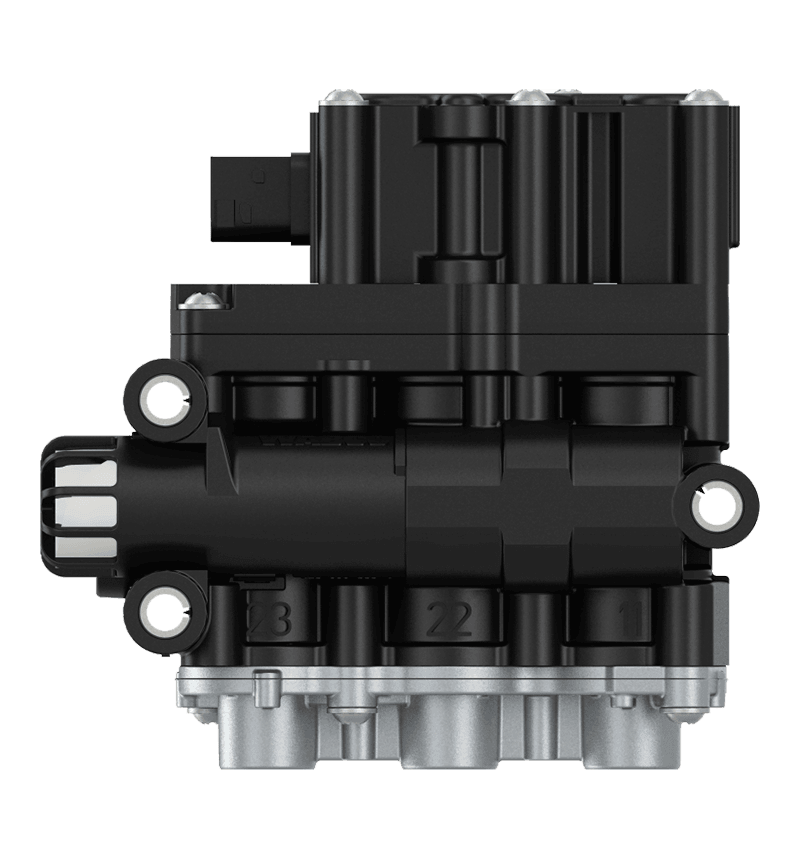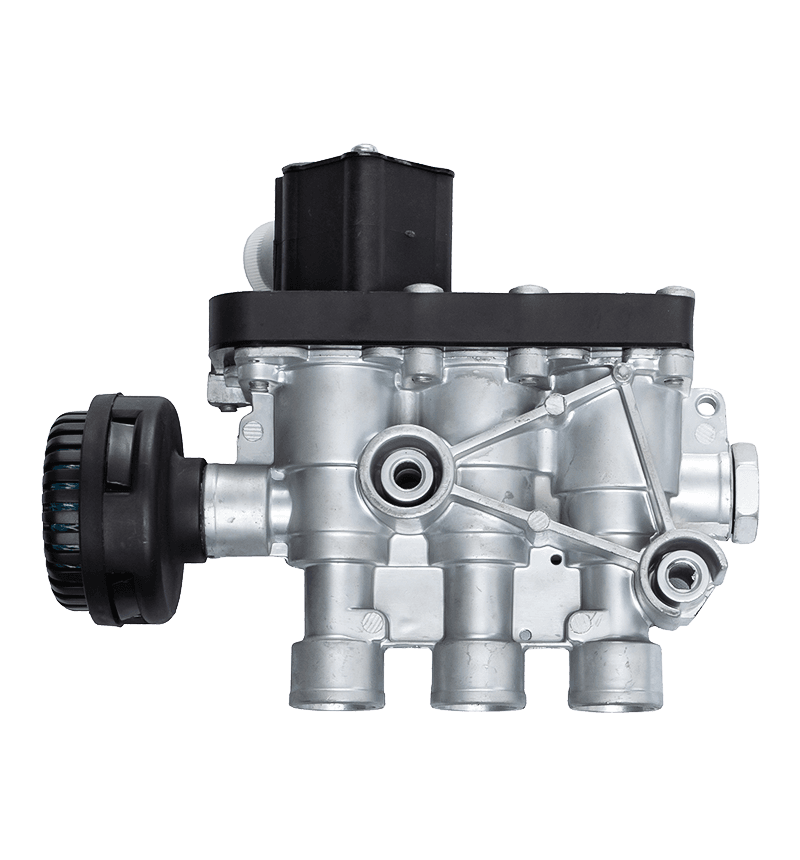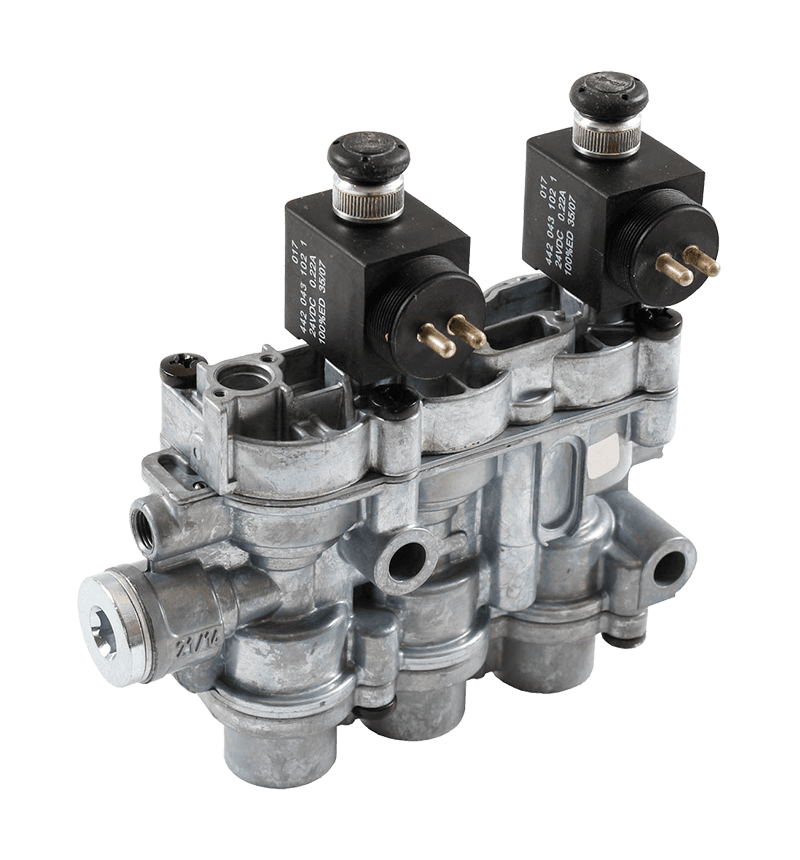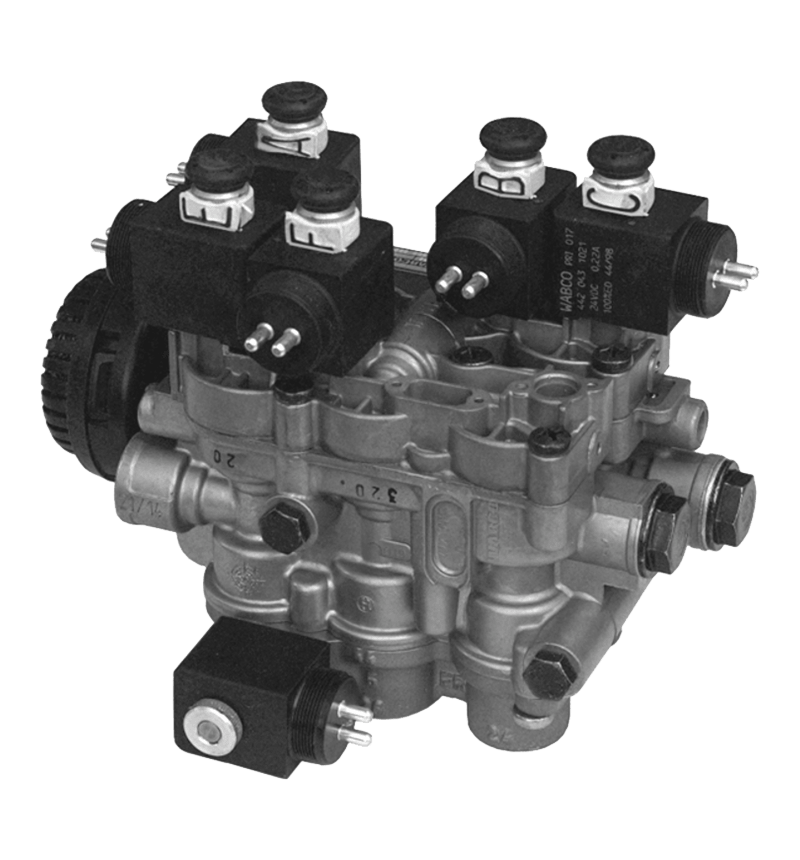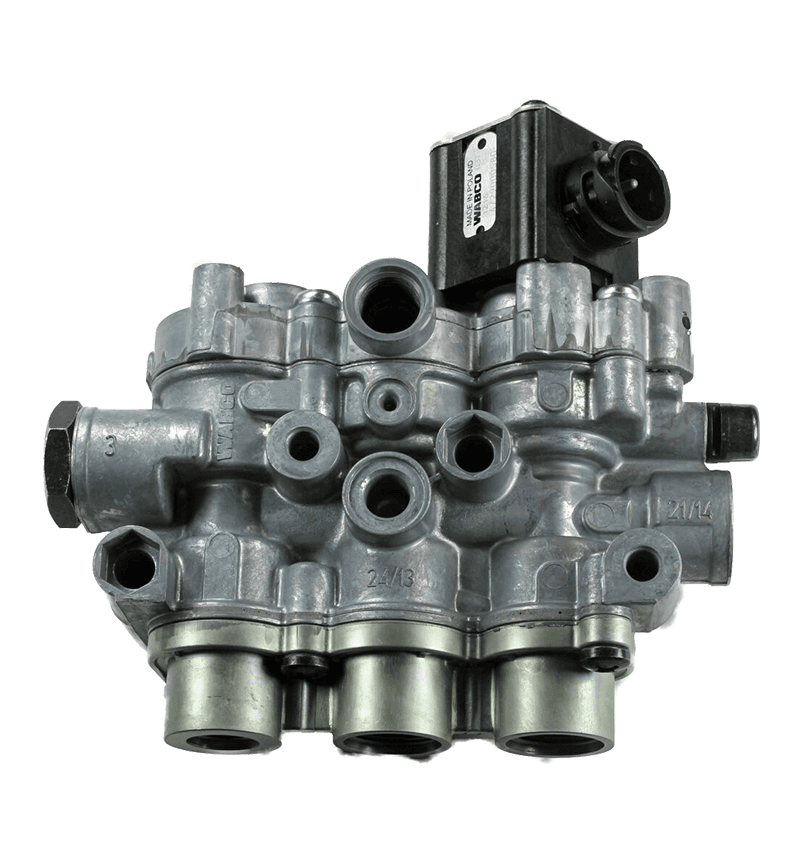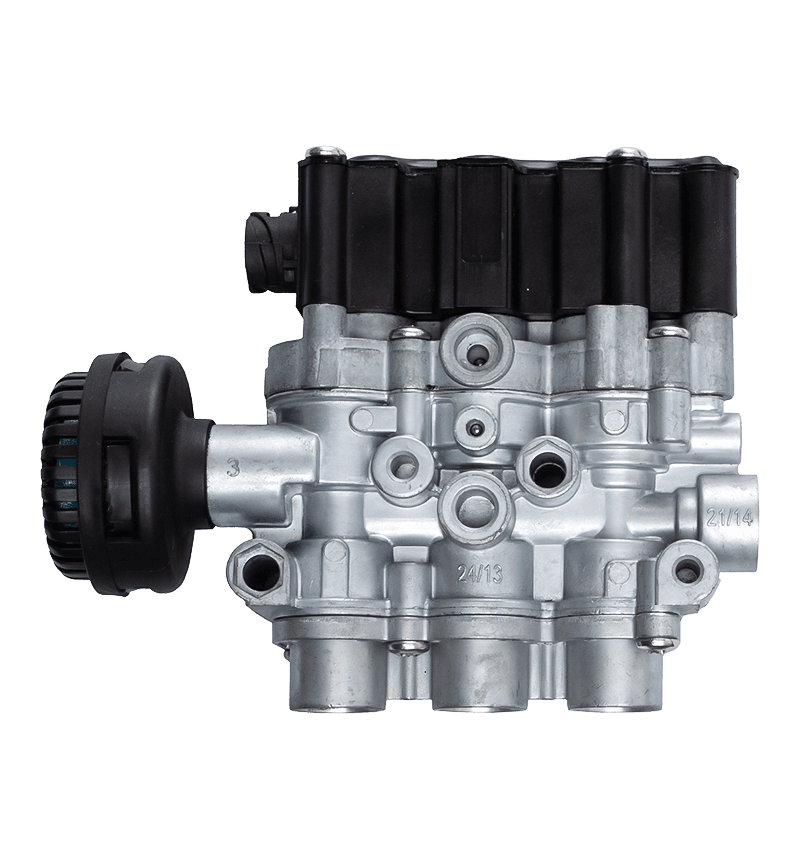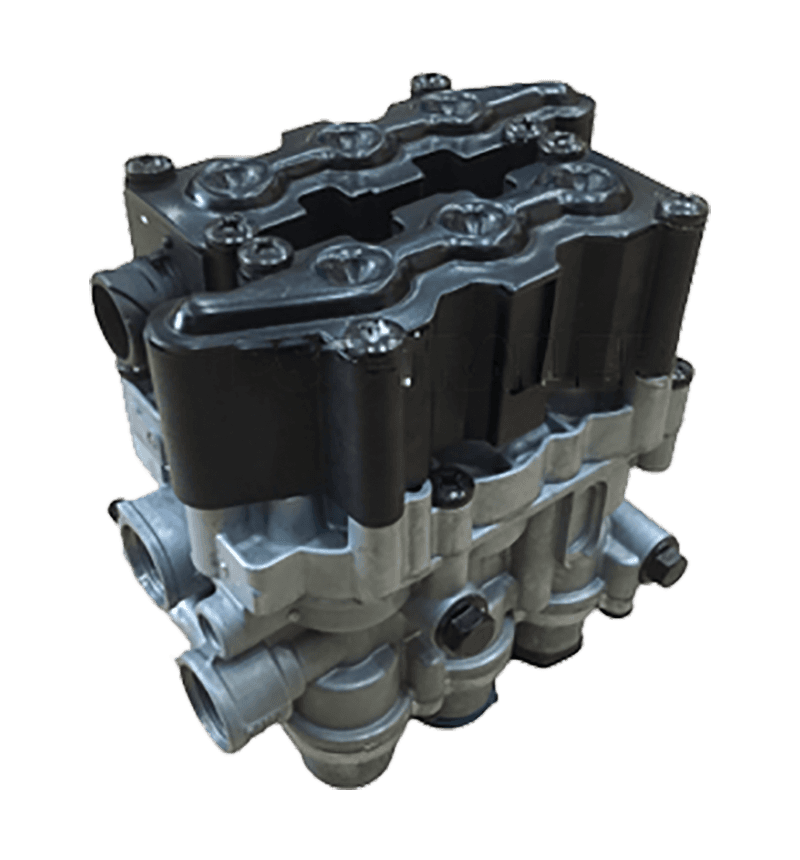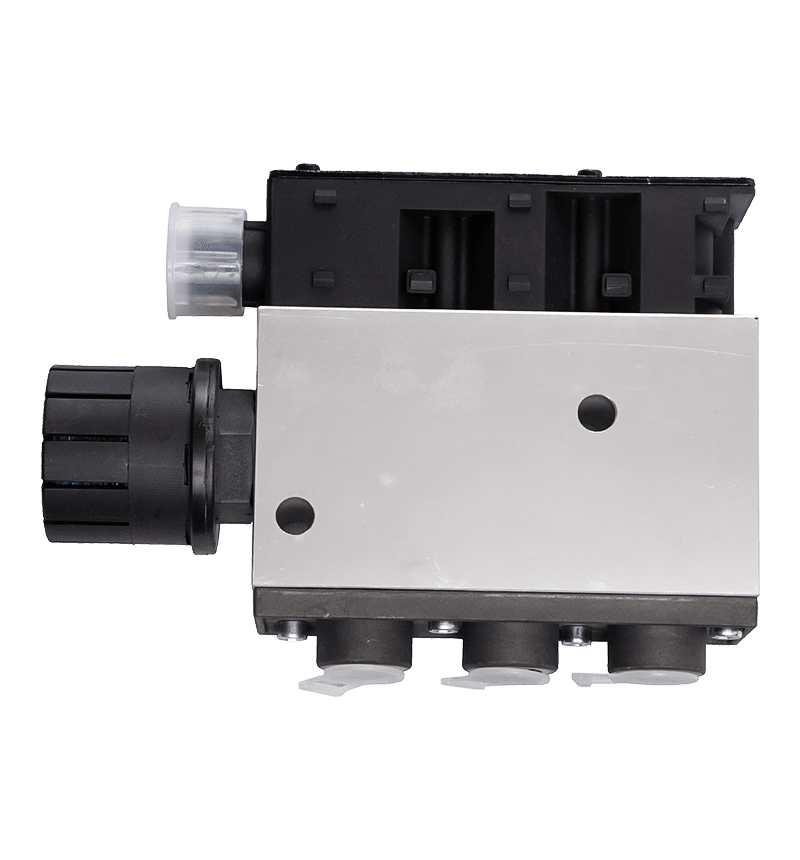Working Principle
The ECAS valve is a key component used in air suspension systems and is widely used in automobiles, especially commercial vehicles and rail transit. This valve adjusts the airflow through electronic control signals, thereby changing the pressure of the suspension system, ultimately affecting the height, hardness and other characteristics of the suspension system, ensuring the comfort, stability and safety of vehicle driving.
Its working principle is based on the cooperation between sensors, electronic control units (ECUs) and air suspension systems. When the vehicle load or road conditions change, the sensor detects these changes in real time and transmits the data to the ECU. The ECU calculates the optimal air pressure value based on this information and drives the ECAS valve to open or close through electronic control signals, thereby adjusting the air pressure in the air suspension system to achieve the purpose of optimizing vehicle performance.
Structural design of ECAS valves
The structural design of ECAS valves usually consists of multiple key parts, each of which plays an important role in its work:
Valve body
The valve body is the main structural part of the valve, usually made of corrosion-resistant and high-strength metal or alloy materials. The valve body contains multiple air flow channels inside to control the flow of air.
Solenoid valve
The solenoid valve is one of the core components of the ECAS valve, which usually controls the inflow and outflow of air through electromagnetic action. Its function is to open or close the air flow channel according to the electronic control signal, thereby regulating the air pressure.
Control module
The control module is part of the electronic control unit (ECU). It is responsible for receiving data from the vehicle sensor and converting the calculation results into control signals to drive the operation of the solenoid valve.
Pneumatic components
These pneumatic components include valves and regulators for regulating airflow to ensure the stability and accuracy of airflow.
Sensors
The sensors are responsible for real-time monitoring of the vehicle's load, the height of the suspension system, the road conditions, etc., and feeding back the data to the control module. These data provide a basis for decision-making for the control system.
Workflow
In the workflow of the ECAS valve, the first is the sensor to monitor the height, load and dynamic information of the vehicle. For example, the height sensors of the front and rear suspension systems of the vehicle will detect the lifting and lowering of the suspension system. When this information is transmitted to the electronic control unit, the ECU will process the data and generate a control signal according to the preset control algorithm.
The control signal is sent to the ECAS valve, which controls the opening and closing of the airflow through the action of the solenoid valve. In this process, the adjustment of the airflow not only affects the height of the suspension system, but also adjusts its hardness and comfort, thereby providing the vehicle with the best driving experience. For example, during driving, the ECAS valve can adjust the height of the vehicle according to different road conditions, so that it can adapt to uneven roads or improve passability.
Performance characteristics
High-precision control
The ECAS valve achieves precise air flow regulation through an electronic control system. Compared with traditional mechanical control systems, the ECAS valve can be accurately adjusted according to the real-time conditions of the vehicle (such as load changes, vehicle speed, road conditions, etc.), thereby ensuring that the suspension system is always in the best working condition.
Quick response capability
The ECAS valve has a fast response speed and can adjust the airflow according to changes in sensor feedback in a very short time. This allows the vehicle to adapt to different road conditions instantly and provide a smoother and more comfortable driving experience.
Automatic adjustment
The automatic adjustment function of the ECAS valve enables the vehicle's air suspension system to automatically adjust according to dynamic changes such as vehicle load and speed without manual intervention, ensuring the stability and comfort of the vehicle.
Improve comfort and safety
The ECAS valve automatically adjusts the performance of the air suspension system under different driving conditions (such as high-speed driving, heavy-load driving, bumpy roads, etc.) by adjusting the hardness and height of the suspension system. It can effectively absorb road vibration, reduce the vibration amplitude of the vehicle, and improve ride comfort; at the same time, it can ensure the stability of the vehicle in extreme conditions and improve driving safety.
Durability and reliability
ECAS valves usually use high-quality materials and precision processing technology to ensure that they can maintain stable performance during long-term use. The valve's sealing and corrosion resistance also enable it to adapt to various harsh environments, such as high temperature, humidity, dust, etc.
Energy saving
The ECAS valve avoids excessive air compression and discharge by accurately adjusting the airflow, thereby reducing energy consumption. This not only improves the energy efficiency of the vehicle, but also helps to reduce the burden on the air suspension system and extend the service life of the system.
Installation and maintenance
Installation requirements
The installation of the ECAS valve needs to strictly follow the installation manual and specifications provided by the manufacturer. During installation, the sealing of all joints and interfaces should be ensured to prevent air leakage. In addition, the valve should be properly connected to the electronic control unit (ECU) and the pneumatic system to ensure accurate signal transmission and stable control of airflow.
Maintenance requirements
The maintenance of the ECAS valve mainly includes regular inspection of the working status of the valve, the accuracy of the sensor, the response speed of the electronic control system, etc. Common maintenance work also includes cleaning the valve body, checking the sealing, and detecting whether the air flow channel is blocked. Regular maintenance can effectively increase the service life of the valve and prevent failures.
Application Prospects
With the continuous development of automotive technology, ECAS valves will play a more important role in intelligent driving and autonomous driving systems. By integrating more sensors and control units, future ECAS valves may work in conjunction with other intelligent systems of the vehicle to improve the overall performance and safety of the vehicle. In addition, with the rise of electric vehicles, the lightweight and energy-saving characteristics of ECAS valves will also be more widely used.


 English
English Español
Español


